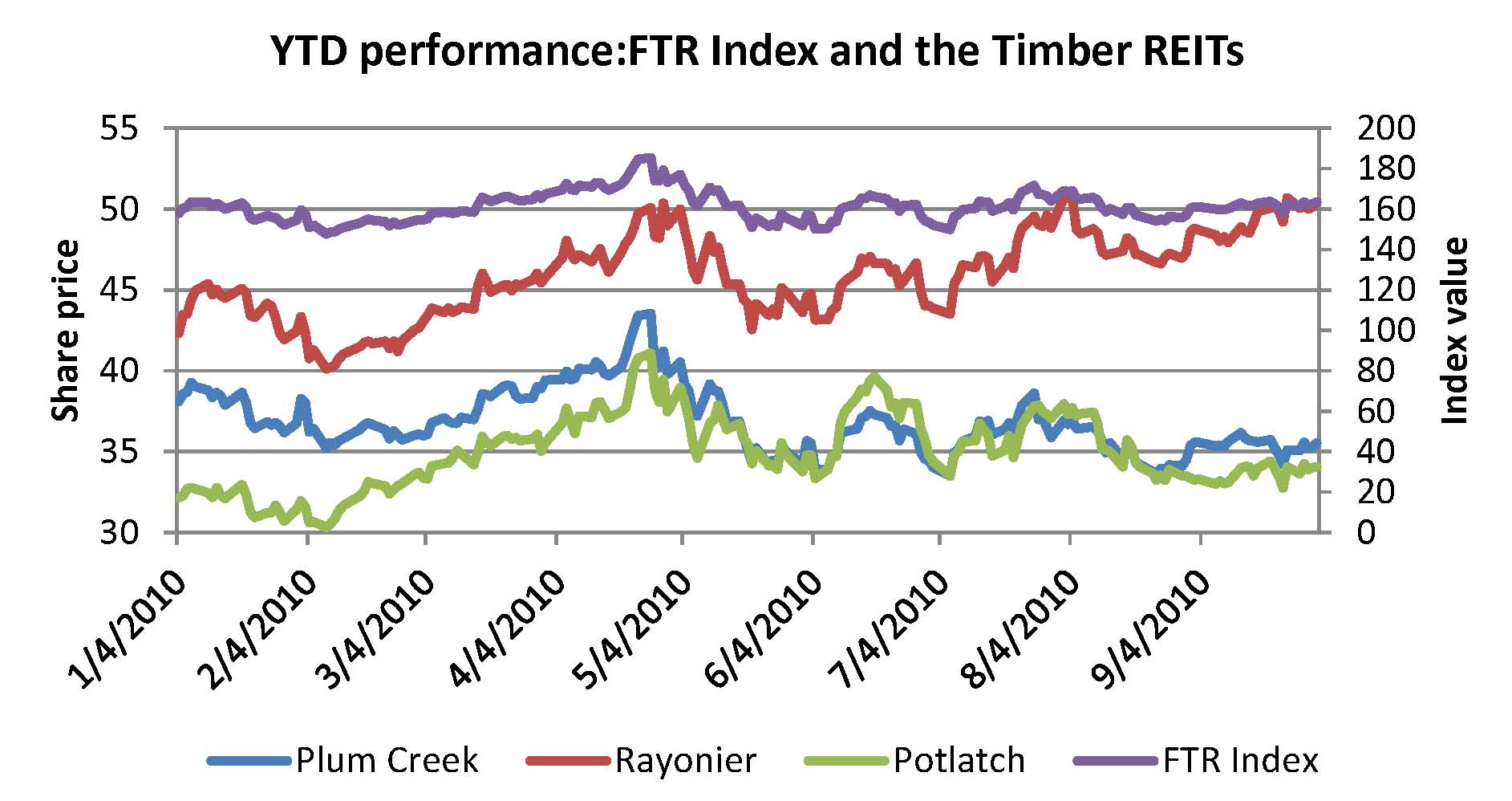Timberland assets provide to their owners the option of altering the mix and timing of forest harvest activities. During adverse market conditions, public timber REITS embrace this “option value.” Over the past three years, we have seen Plum Creek (PCL), Potlatch (PCH) and Rayonier (RYN) defer harvests, mainly of higher valued sawlogs used to manufacture lumber, while shifting the harvest mix towards pulpwood markets, where pricing has remained relatively stable.
However, the financial returns of these firms are also subject to the performance their manufacturing assets. Wood products businesses – such as lumber, OSB and plywood – have operated at reduced levels due to subdued demand. As income from the timber and wood products segments declined, sales of non-strategic lands have become an important source of cash for timber REITs, especially for Plum Creek and Potlatch. Alternately, Rayonier continues to benefit from the healthy results of its performance fibers segment due to stronger export markets and favorable pricing. These differences across business operations partly explain the varying performances of individual timber REIT shares in 2010 (see figure).
Year-to-date, the Forisk Timber REIT (FTR, “footer”) Index returned 5.66% (annualized) versus 3.74% (annualized) for the S&P 500. Rayonier outperformed the sector with its share price up 26.21% year-to-date (annualized), with Potlatch up 7.99% and Plum Creek down 8.95%.
For FTR Index calculation methodology, please visit www.forisk.com and click on “Services/Equity Research.”
For detailed historical FTR Index data in Excel or questions regarding the Index, please contact Neena Mishra, nmishra@forisk.com
For information regarding Forisk Equity Research and quarterly coverage, please contact Brooks Mendell, bmendell@forisk.com


Leave a Reply